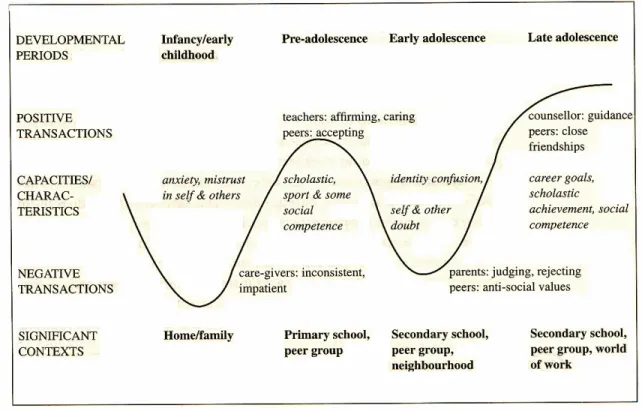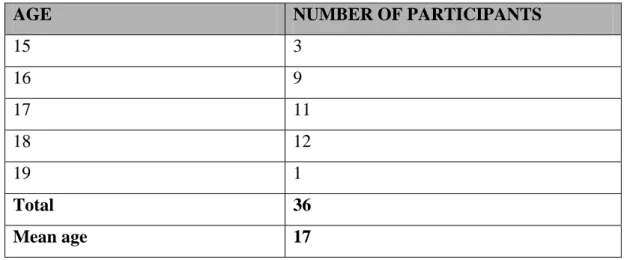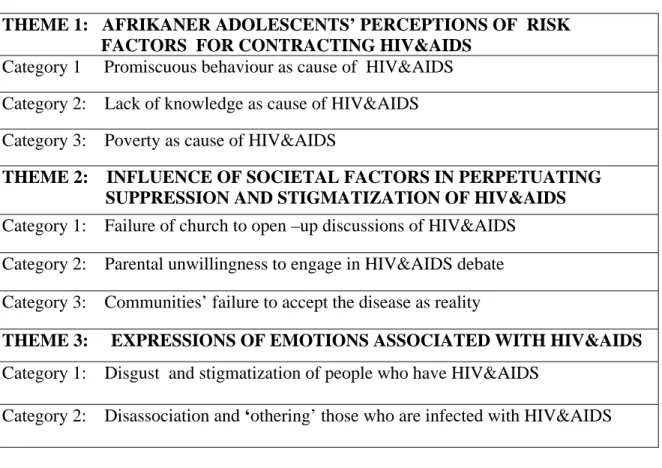There is little research documenting Afrikaner adolescents' perceptions of the HIV & AIDS pandemic, despite the fact that the HIV & AIDS disease has reached pandemic levels. These silences within society to accept the reality of the disease perpetuate stigmatization and discrimination against people living with HIV and AIDS.
INTRODUCTION
Knowledge about how HIV and AIDS education is delivered in schools is sparse and often anecdotal. Research shows that HIV and AIDS education is not always delivered as expected (Bennet et al., 2000).
RATIONALE FOR THE STUDY
Kelly (2000) argues that unless there is a clear understanding of the impact that HIV & AIDS has on the education sector, it will be impossible to plan to accommodate and overcome these impacts. By implication, these policies recognize the school as an important environment to also face the challenges of the HIV &.
PROBLEM STATEMENT
Secondary Research Question
What recommendations in the form of guidelines can be made to facilitate understanding of the HIV and AIDS pandemic in the context of an African secondary educational institution.
RESEARCH AIMS
Primary aim
Secondary aim
CONCEPT CLARIFICATION
Perception
- Adolescents
- Afrikaners
- Secondary school
- HIV & AIDS
- Pandemic
A school is an institution, public or independent, that provides education for some or all of grades R to 12 within the meaning of the South African Schools Act (1996: Act 84). Pandemic refers to a widespread disease outbreak affecting the global population of a wide area of the world (Holden, 2003).
THEORETICAL FRAMEWORK
Piaget's (1954) stages of cognitive development can be seen as a useful framework for contextualizing an adolescent's understanding of health and illness, their knowledge of AIDS, and their level of understanding of AIDS-related illness. In conducting this research, I would like to understand how African youth perceive the HIV and AIDS pandemic, and through this study, I would like to determine how their perceptions influence their behavior.
RESEARCH DESIGN AND METHODOLOGY
Research design
He places a strong emphasis on the emergence of the self, the universal search for identity, and the individual's interactions with significant others throughout life, which take place within the cultural framework. It is also associated with a wide range of social problems caused by adolescents' risk-taking behavior and feelings of invincibility, regardless of their actions.
Research methodology
- Sample
- Ethical obligation
- Data collection
- Data analysis
- Trustworthiness
In accordance with the aims of qualitative methodology, namely the reconstruction of the participants' world, a focus group interview will be advantageous for this study (De Vos, 2000). I believe that using the focus group interview as a data collection tool for my research will be ideal to gain the maximum insight into the perceptions of African youth.
DELIMITATION OF THE STUDY
In the first step, the researcher engages in reading the transcripts in full and then jots down the main ideas that come to mind in the margins. Four strategies are defined for ensuring reliability, ie: reliability, transferability, reliability and confirmability. These strategies are used to eliminate bias in the final results of the qualitative analysis.
FURTHER COURSE OF STUDY
SYNTHESIS
INTRODUCTION
HIV & AIDS
- Impact of HIV & AIDS on Society
- Impact of HIV & AIDS on Education
- The Impact of HIV & AIDS on the Adolescent
- Ecosystemic framework for understanding the Development of adolescents’
- The Macrosystem
- The Exosystem
- The Mesosystem
- The Microsystem
The extent of the AIDS pandemic among the youth in South Africa is enormous as HIV &. Moreover, several authors (Boyer, Tschann, & Schafer 1999; Small & Luster 1994; Smith, 1997) maintain that academic problems, association with deviant peers, drug use and other adolescent-related behavioral problems (bullying, alienation, peer pressure, anxiety) and depression ) are then each predictive of adolescents' unsafe sexual behavior and misperceptions about sexually transmitted diseases, including HIV and AIDS.
FRAMEWORK FOR UNDERSTANDING ADOLESCENTS
- Adolescent thinking
- Adolescent identity
In order to understand the perceptions of adolescent learners and the way in which they react to any stimuli, the act of perception must be considered in terms of the individual's cognitive structure. The most important task of adolescence is to discover "Who am I?" (Which is an important aspect of this search for identity). He sees the cliquishness of adolescence and its intolerance of difference as a defense against identity confusion.
Adolescents’ Social Transactions
The transactional model suggests that what happens in individual-context transactions at specific critical points in development can consolidate, change, or disrupt abilities that were laid down earlier. Such lasting effects may occur, but the transactional model suggests that they result from. The difference is that the transactional model helps us understand the complexity of the development path.

THE AFRIKANER COMMUNITY
- Introduction
- Christian National Education
- The Role of the Church
- Stigmatization and discrimination
- Life Skills and sexuality education
In many places, the church conveniently denied that HIV & AIDS had anything to do with it." He argues for the necessity of the church to think theologically about the reality of HIV & AIDS. Van Wyngaard (2004) maintains that the church was probably as guilty of denying the reality of HIV & AIDS as any other body.
CONCLUSION
Education has given priority to the establishment of Life Skills and HIV education courses in Secondary schools (Department of Education, 2000). Intervention programs aim to increase knowledge about HIV & AIDS and its transmission, with the assumption that this will in turn change behavioral patterns and thereby change HIV & AIDS transmission (Morrell, Moletsane, Abdool Karrim, Epstein & Unterhalter, 2002 ). Considering the preceding discussion, the influence of culture, religion and education may make it difficult to implement the Department of Education policy that provides HIV and AIDS education in school.
INTRODUCTION
PROBLEM STATEMENT
RESEARCH AIM
RESEARCH DESIGN
- Introduction
- Qualitative research approach
- Focus group as an interviewing method
- Trustworthiness
In accordance with the genre of the qualitative paradigm, I will use focus group interviews for data production. The researcher attempted to understand the subjective reality of the phenomenon as perceived by the participants. The sample included learners from the senior phase in the secondary school, which could provide insight into perceptions of Afrikaner adolescents of the HIV & AIDS pandemic.
RESEARCH METHODOLOGY
- Sample
- Data collection
- Data analysis
Information-rich participants who are likely to be knowledgeable and informed about the HIV and AIDS pandemic were selected. This study was qualitative in nature and was not intended to generalize its findings, but merely to explore the perceptions of a small group of African youth regarding the HIV and AIDS pandemic. This study could be useful for other researchers working with intervention programs for all youth in relation to the HIV and AIDS pandemic.

LIMITATION OF THE STUDY
In the first step, the researcher engaged by carefully reading the transcriptions and then jotting down the main ideas that came to her mind in the margin. Meaning units were then identified and categorized according to the themes that emerged from the analysis (Kvale, 1996).
ETHICAL CONSIDERATIONS
CONCLUSION
This chapter focuses on the analysis and discussion of the data related to African youth's perceptions of the HIV & AIDS pandemic. Major themes and categories (table 4.1) that emerged from the data are presented in this chapter. Direct quotes from the participants are used and the findings are contextualized by using literature to support or refute the themes and categories.
The participants in this study perceived promiscuous behavior as a significant risk factor for becoming infected with HIV and AIDS. Several studies (Buga 1996; Kelly 2001) indicate that this is a common belief among most individuals that HIV & AIDS is caused by promiscuous behavior. I think it's a punishment for people who sleep around and have sex with different people.”
Category 3: Poverty as cause of HIV & AIDS
Everyone is dying from HIV and most black people don't have the necessary knowledge and don't know what it can really do to you and how it is transmitted to each other…”. While the effects of HIV and AIDS are felt by all population groups, the disease is most prevalent among impoverished people with fewer means of coping. In addition, poverty is associated with many other factors that increase the risk of HIV infection, including humanitarian crises and substance abuse.
- Category 1: Perceptions of the failure of the Church to open –up discussions of HIV& AIDS
- Category 2: Communities’ failure to accept the disease as reality
- Category 3: Parental unwillingness to engage in HIV & AIDS Discourse
It is necessary for the church to transform its beliefs in order to face the HIV & AIDS crisis. Community responses to AIDS are based on people's constructions of the HIV & AIDS virus. Some participants experienced that their parents are afraid and not familiar with the HIV & AIDS topic.
- Category 1: Disgust and stigmatization of people who have HIV&AIDS
- Category 2: Disassociation and ‘othering’ those who are infected with HIV&AIDS
Pelzer (2003) states that people who know about HIV & AIDS have a more supportive attitude towards people with HIV & AIDS. The participants in this study distanced themselves from people who have HIV & AIDS based on the fact that the disease did not exist in their environment and therefore the HIV & AIDS disease was "out there". According to Francis (2002), the distancing and isolation of people with HIV & AIDS strips them of all human values and constant oppression by "other" people who have HIV & AIDS.
CONCLUSION
Campbell, Foulis, Maimane and Sibiya (2005) further argue that people deal with their own fears by 'othering' certain individuals and isolating them so that they can distance themselves from the disease for fear of being infected by HIV.
INTRODUCTION
CONCLUSIONS
AIDS is thriving. The adolescents felt that the church could be more helpful in addressing the HIV&AIDS pandemic in a constructive way. There are a number of silences in communication around HIV & AIDS that are experienced by the participants in the school. The difficulties participants faced in communicating about HIV and AIDS appeared to be affected by perceived parental disapproval, religious barriers, cultural and social assumptions.
IMPLICATIONS OF THE STUDY
Interestingly, most participants who were misinformed about HIV transmission gave stigmatizing responses, suggesting that increased understanding of behaviors related to HIV transmission may result in less stigmatizing beliefs about infected persons (Herek, Capitanio & .Widaman, 2002). Participants' perceptions of HIV-infected persons were mostly negative and intolerant, as they would avoid people with AIDS in their community or elsewhere. Despite acknowledging the severity of the problem, perceptions of HIV and AIDS risk were not personalized, with strong feelings expressed by participants that HIV only affects 'them' and not 'us'.
RECOMMENDATIONS
Risk reduction programs for individual students to promote healthy behaviors related to HIV and AIDS should be prioritized. Parents, educators and community structures such as the church must come together and form a strong front to disseminate relevant and authentic information about HIV and AIDS. Parents need to be empowered with better tools to communicate with their children about sensitive issues such as sex and HIV and AIDS.
RECOMMENDATIONS FOR FURTHER RESEARCH
This program should include information relevant to the transmission of HIV and AIDS, behavioral competence skills that will promote abstinence, and informed decision-making skills. These HIV and AIDS prevention programs could be implemented through peer support groups and counseling sessions using a life skills curriculum as recommended by the Ministry of Education. Parents and educators should arrange for school visits and conversations with people infected with AIDS, in this way they would eliminate ignorance about HIV and AIDS and thereby create a more sympathetic and understanding attitude towards people with AIDS.
SYNTHESIS
I have a bad child in my house': HIV & AIDS management in a South African community. The role of schools in meeting the needs of children made vulnerable by HIV and AIDS. A quantitative study of knowledge, attitudes and behavior related to HIV & AIDS among Zulu-speaking Standard 8 secondary school students.
The question was: "Can you tell me how you perceive the HIV and AIDS pandemic?". Interviewer (FB): Can you tell me how you experience the HIV and AIDS pandemic.


